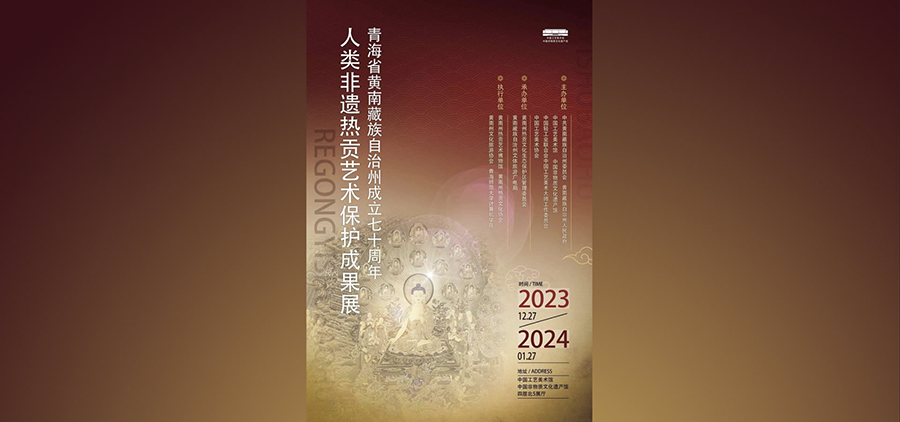Regong Cultural Protection Exhibition
2023-12-27
The Huangnan Tibetan Autonomous Prefecture is located in the southeastern part of Qinghai Province, bordering the provinces of Qinghai, Gansu, and Sichuan, and it falls entirely within the Three Rivers Source National Ecological Protection Comprehensive Experimental Zone. It holds several prestigious titles, including being a national-level cultural and ecological protection area, the hometown of Chinese ethnic folk art, the hometown of Chinese Thangka art, a well-known brand creation demonstration area for Rgya gling culture industry, a national 4A-level tourist attraction, one of the first batch of national cultural and tourism consumption pilot cities, a national-level rural tourism key village, a national model area for ethnic unity and progress, a national minority characteristic village, a national ecological civilization construction demonstration area, a national forest wetland park, and a national-level intangible cultural heritage productive protection demonstration base, among others. It has declared 701 items in the intangible cultural heritage list, identified 593 representative inheritors of various levels of intangible cultural heritage projects, selected 1,233 master craftsmen and folk craftsmen, with more than 33,000 Rgya gling artists. Over the years, Huangnan Prefecture has steadfastly promoted ecological governance, industrial prosperity, open development, talent cultivation, cultural enrichment, innovation, and harmonious security, making significant contributions to consolidating the construction of the national ecological civilization demonstration zone and developing green industries such as eco-organic and cultural tourism. It has embarked on a path of long-term stability and modernization with characteristics of the times, plateau features, and Huangnan characteristics.
The Rgya gling art in Tongren City has a long history of inheritance and possesses significant historical, cultural, and artistic value. Originating from the Tibetan areas of Huangnan, Qinghai in the 13th century, Rgya gling art flourished with the prosperity of Longwu Monastery. Rgya gling art mainly refers to stylized arts such as Thangka, murals, embroidered pile, embroidery, sculpture, architectural painting, butter sculpture, and sand mandalas. On May 20, 2006, Rgya gling art was included in the first batch of national-level representative projects of intangible cultural heritage. In 2009, Rgya gling art was included in the UNESCO Representative List of the Intangible Cultural Heritage of Humanity. On May 15, 2018, Rgya gling art was included in the first batch of traditional craft revitalization catalogs. In celebration of the 70th anniversary of the founding of Huangnan Tibetan Autonomous Prefecture and to showcase the achievements in the protection and inheritance of Rgya gling art, the "70th Anniversary of the Establishment of Qinghai Province Huangnan Tibetan Autonomous Prefecture·Exhibition of Human Intangible Cultural Heritage Achievements in Rgya gling Art" was held, aiming to celebrate and strengthen the sense of community of the Chinese nation.

 Whats On
Whats On  Whats On
Whats On 

